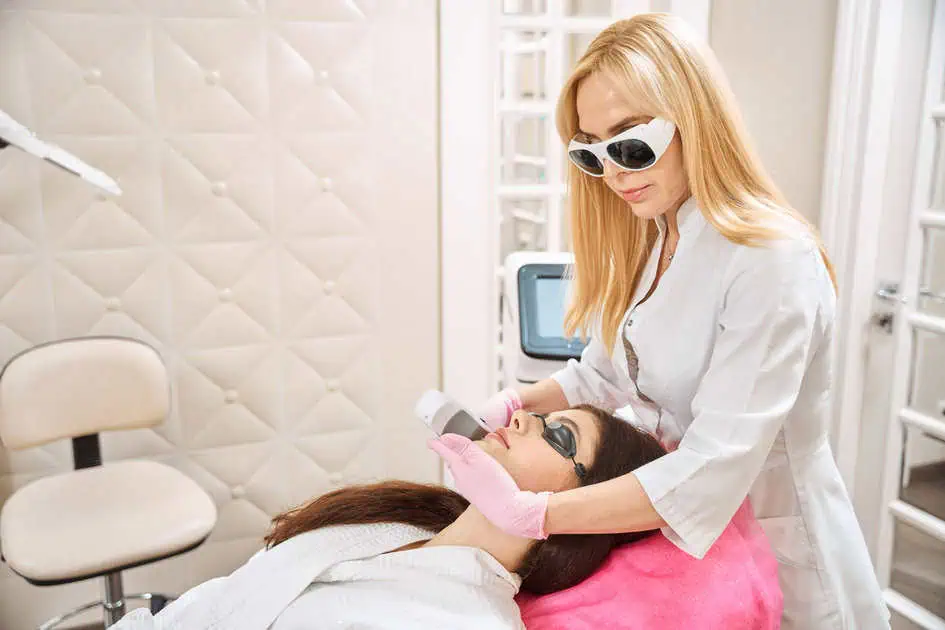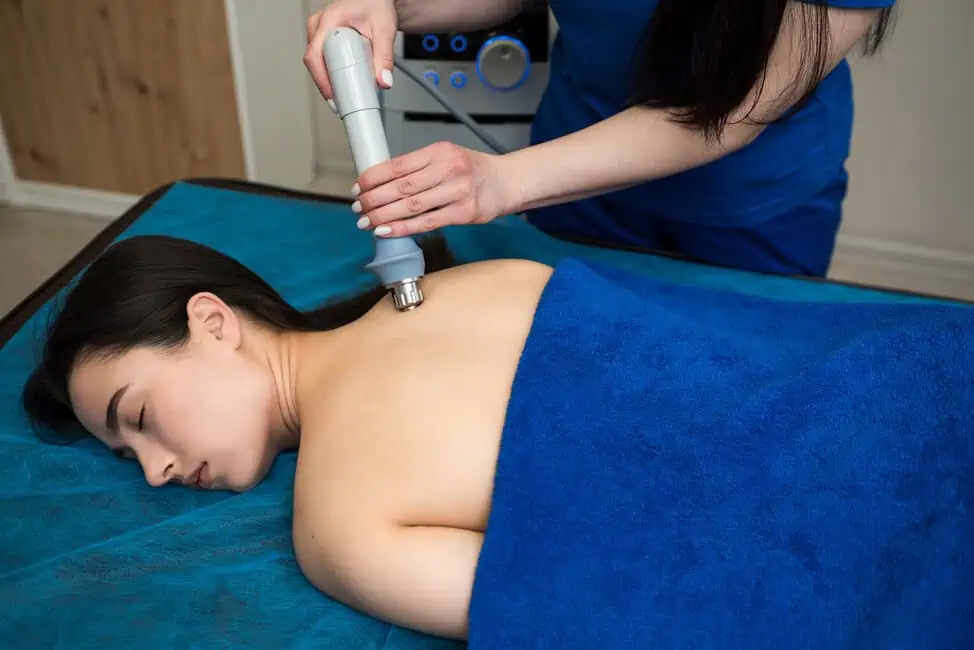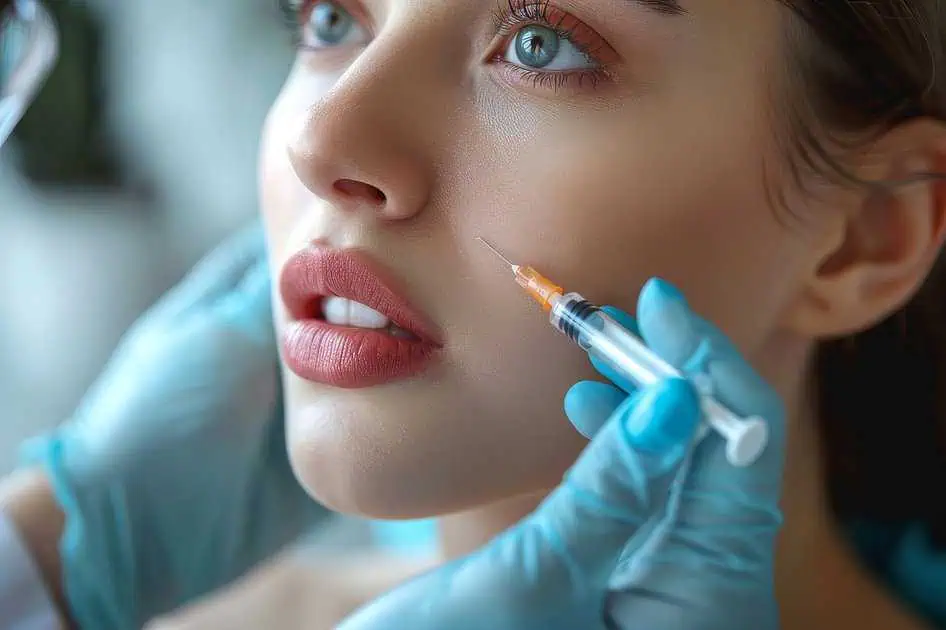For anyone looking for improvement in their skin’s overall appearance, microneedling is an incredibly versatile treatment. As one of our aesthetic skincare procedures here at Source of Health, we recommend microneedling as a non-invasive treatment option for issues such as acne scarring, uneven texture and pigmentation, and the effects of aging – such as fine lines, wrinkles, and skin laxity.
Although the concept of using needles might sound a little intense, it’s safe and produces impressive results. (If you’d like to see Dr. Sorr undergoing a session, you can view the process here!)
You may be wondering about these powerful needles and why they’re great for your skin’s appearance. Most aesthetic procedures work by creating minute injuries – either thermal, chemical, or mechanical. In this case, the treatment uses tiny (that’s why they’re called microneedles), multiple stainless steel needles used in a tailored way and adjusted to a precise depth. If you’ve been following our previous blogs, you’ve learned that this type of therapy stimulates beneficial functions in your body – in this case, collagen production. That’s why you’ll also hear the term Collagen Induction Therapy used.
Where can we utilize Microneedling?
Since it’s gentle enough for your facial skin, this treatment can be used on your neck, decollete, stretch marks, or scars anywhere on the body. Anyone, even those with sensitive skin, can be a great candidate. If you’re concerned about a specific condition, contact us to discuss any contraindications.
Who can benefit from Microneedling?
Did we mention that this is a highly versatile procedure? Honestly, microneedling is a game-changer for so many people due to its effectiveness and mode of use. All skin types and colors can find benefit from this minimally invasive treatment that increases collagen in the skin. Collagen is a critical component in skin appearance and health. Quite astounding, a microneedling session can increase collagen production by up to 400% after each treatment!
It’s a fact of life that all of us lose 1% of collagen each year after our mid-20s. Boosted collagen levels help any man or woman who is seeking out non-invasive and effective anti-aging treatments, addressing the appearance of fine lines and wrinkles, or is interested in reducing acne scarring.
What happens during a Session Microneedling Procedure?
If you took a peek at Dr. Sorr’s session above, you’d have a general idea of how safe and simple microneedling is. But let’s walk through the process.
Before your first visit, we’ll ask you to avoid recent sun exposure, as well as some medications. When you arrive, we’ll provide informed consent about the procedure, answer any questions, and then utilize clinical photography for your “Before” pictures. We’ll also take photos in the middle and at the end of your treatment series to track your progress and results.
To prepare for the treatment, we’ll apply a numbing cream to your skin for up to 30 minutes. The next step is to cleanse the skin, and a topical agent is applied to help the device glide smoothly. If we are applying growth factors or Platelet Rich Plasma, they will be added to maximize your treatment results. For example, the addition of bone marrow tissue repair cultured growth factors from AnteAge MD is often used in our clinic. This option is less expensive than PRP and reduces post-treatment inflammation.
After the microneedling treatment is finished, we’ll apply aftercare serums and provide any needed instruction. Post-treatment, you’ll probably have a warm glow and some pinkness – like a mild sunburn. This will fade by the second day. We recommend that you stay out of the sun and avoid exercise and sweating to prevent unwanted hyperpigmentation. Following our skin hygiene protocol with approved aftercare products will prevent any infection or irritation. We have aftercare down to a science, and we want you to look and feel great!
Note that microneedling is not a bloody procedure – remember Kim Kardashian and her dramatic photo from a few years back? New thinking and the latest scientific research have shown that there is no need to penetrate the reticular dermis, where the blood vessels live. Instead, we’ve learned that lightly breaking the skin barrier stimulates collagen production and rapid recovery. You don’t have to experience pain to attain the glow that microneedling provides!
Microneedling, Microchanneling and Rollers: What you need to know
With the increasing popularity of this treatment, you’ve probably seen some confusing terms thrown around. Let’s look at the differences between Microneedling, Microchanneling, and Rollers so that you can make an informed decision on what’s best for you.
1. Microneedling
Microneedling is a medical treatment performed in our office. Using the Exceed Microneedling Device, we’re able to penetrate down to the deeper layers of skin, ranging from 0.5mm to 3mm. It’s safe, has the highest levels of associated research and time-proven results, and has a double FDA clearance for use on fine lines and acne scars.
Pros: This process stimulates collagen safely, stimulating fibroblasts to make new blood vessels and collagen. It can also be combined with tissue repair growth factors or PRP to enhance results through deeper penetration and delivery. Microneedling can also be stacked with laser treatments at the same visit.
Cons: As an in-office procedure, it’s more expensive than trying it at home with a kit. The effectiveness of the deeper penetration we offer requires that you stay out of the sun pre-and post-treatment, as well as appropriate skincare. For the same reason, a numbing cream is applied at each session.
2. Microneedling with RF
Microneedling with RF has received a lot of buzz. This approach uses a combination of microneedling with a radiofrequency current that generates heat, aiming to boost results with targeted higher temperatures.
Pros: The extra kick of RF and heat can stimulate more collagen production.
Cons: Microneedling with RF has higher costs per treatment. It requires an application of numbing cream before each session, and topical PRP and growth factors can’t be used during the treatment – reducing their effectiveness. For some clients, the heat of the RF creates discomfort and track marks, and this process is contraindicated for those with Melasma and some darker skin types.
3. Microchannels
Microchanneling is an at-home treatment that uses a pen-like device called a stamper. Using shorter needles than a microneedling device (about 0.25 mm, as opposed to the 0.5 mm-3 mm range of an Exceed unit), these treatments don’t penetrate as deeply as microneedling.
Pros: Less expensive, less invasive. More frequent use can help stimulate/exercise the skin.
Cons: The fact that micro channeling uses a more shallow needle imprint also means that it doesn’t penetrate deeply enough to stimulate fibroblasts and growth factors like platelet-derived growth factors (PGF), transforming growth factor-alpha, and beta (TGF-⍺ and TGF-β), and connective tissue growth factors.
4. Rollers
An older form of the technology, rollers, has been phased out in offices. Rather than utilizing the movement of fine needles piercing directly up and down (called a puncture), derma-rolling creates tiny linear cuts as the device drags over and through the skin. This system has far less favorable results than the current FDA-approved device used here at Source of Health.
Cons: These systems aren’t available via reputable companies. Like all the services we provide at our office, we’ve researched, trained, and carefully chosen our system. When you visit our clinic, we provide services that use the Anteage MD line – it’s the best out there with its innovative, effective, and powerful regenerative products.
Once you’ve begun your microneedling sessions, you’ll find that this treatment decreases fine lines, wrinkles, acne scars, and stretch marks over 4-6 weeks. There’s no significant downtime after treatment. You may need to follow through on an aftercare regimen to avoid post-procedure complications. Unlike surgery, there’s no need to allow several days or even weeks to recover. Microneedling can be done every 4-6 weeks.
At Source of Health, microneedling is always done in packages of 3 or 6 sessions, depending on your concerns. For maintenance purposes, it’s also a great treatment to do every 3 months to continue stimulating your skin’s collagen production and to keep your glow on. If you’re ready for a dramatic change in the look and feel of your skin, call us today to schedule an appointment!






